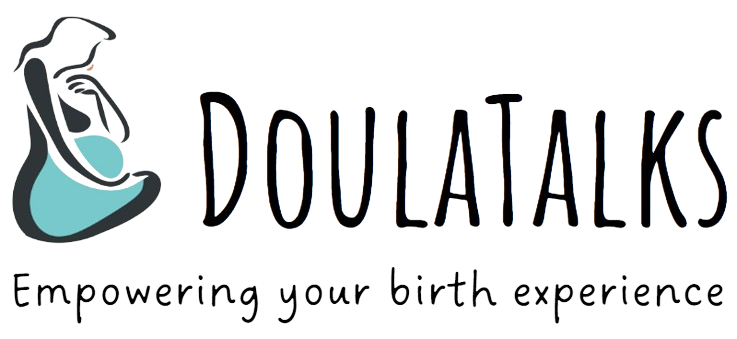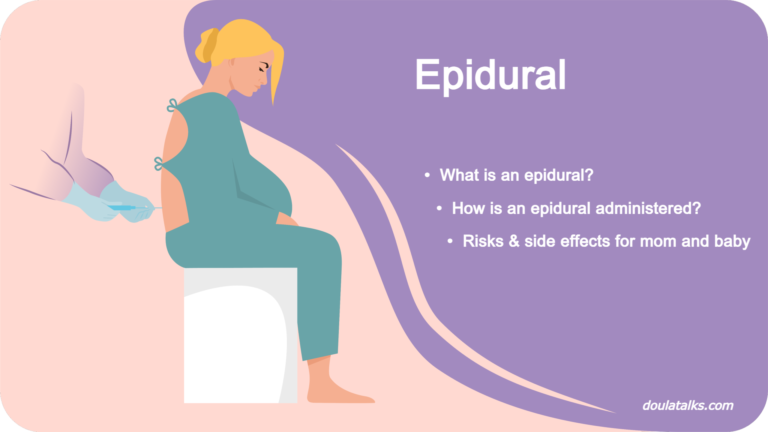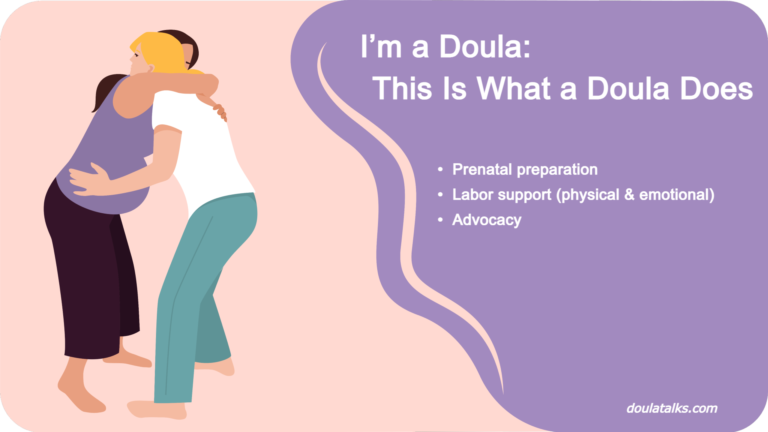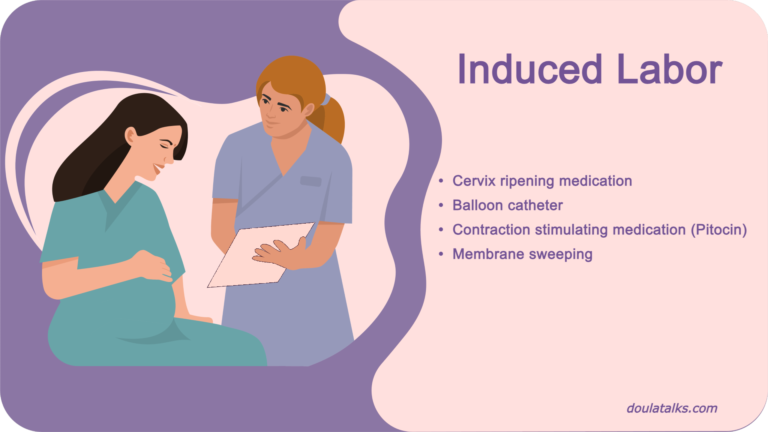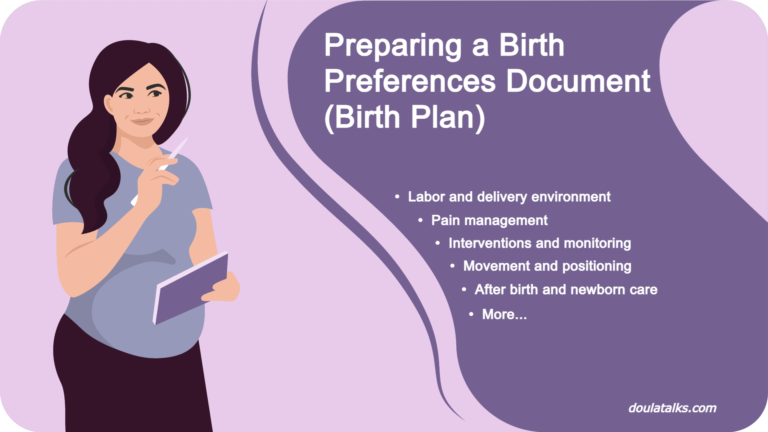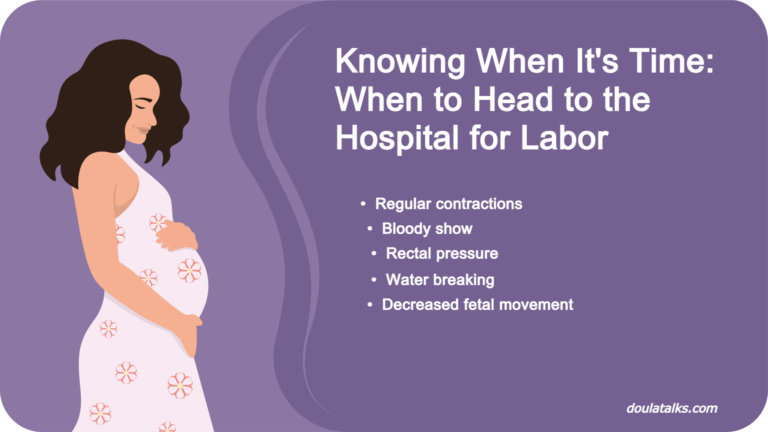Breech Baby
A breech baby is one of those topics no one feels the need to talk about – until they realize that the baby is not flipping, and by that point it might be a bit late.
By Liat Salomon, doula
January 2, 2025
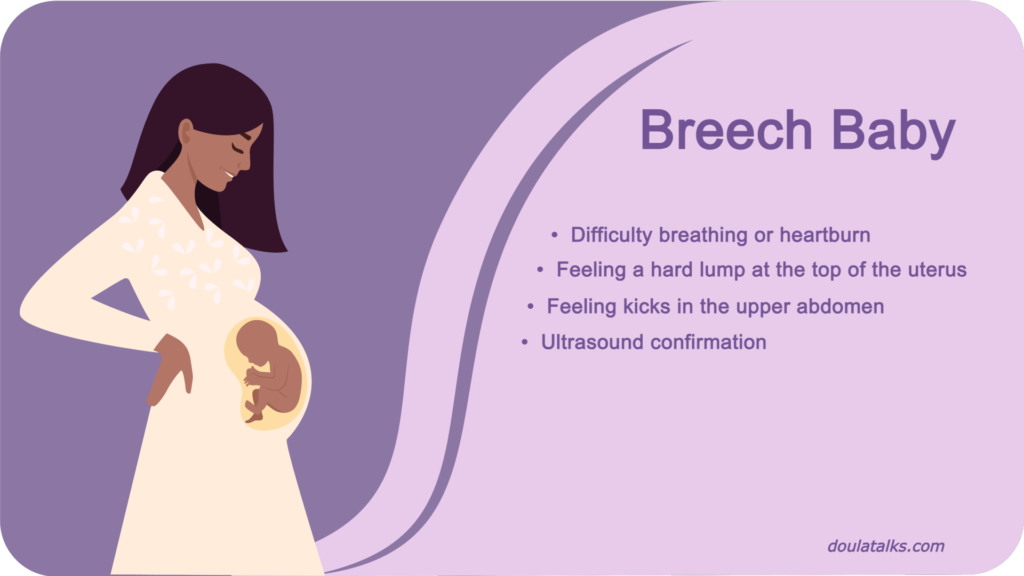
In This Article:
- What is a breech baby?
- Signs of a breech baby
- Causes of a breech baby
- Risks to the baby when delivered in a breech position
- What is the success rate of delivering breech babies?
- Are breech deliveries more painful?
- How does labor start with a breech baby?
- Breech baby head shape
- How to turn a breech baby
- Additional methods for turning a baby in a breech position
- Sleeping positions to turn breech baby
- Conclusion
What is a breech baby?
A breech baby is a term used to describe a baby who is positioned bottom-down (feet or buttocks first) in the mother’s uterus, rather than head-down, which is the normal position for a baby preparing for birth. About 3%-4% of full-term pregnancies result in breech presentation.
In most cases, a baby will settle into the head-down position between 32 and 36 weeks of pregnancy. However, some babies may continue to change positions up until the onset of labor. A breech baby can turn head-down during labor, although this is less likely as the baby grows larger and has less room to move around in the uterus.
There are three types of breech presentations:
Frank breech
The baby’s buttocks present first, and the legs are flexed at the hips and extended at the knees, so the feet are near the baby’s head.
Complete breech
The baby is in a sitting position with the knees and hips both flexed, so the feet and buttocks are presenting.
Footling breech
One or both of the baby’s feet are presenting first rather than the buttocks.
It’s important to note that not all babies will turn head-down on their own or with medical intervention, and some breech babies may require an alternative birth plan. Unfortunately, the number of skilled obstetricians (OBs) that can assist in a vaginal breech birth has dramatically decreased—it used to be a common practice, as long as the baby was in a front breech position. Today, a planned cesarean delivery (C-section) is the more common recommendation. The decision on whether to perform a C-section or attempt a vaginal delivery will depend on the specific circumstances and risks involved.
Also Read:
Signs of a breech baby
There are a few signs that a baby may be in a breech position:
- Feeling a hard lump at the top of the uterus: In a head-down position, the baby’s head will be in the pelvis and the rest of the body will be in the upper part of the uterus. If the baby is in a breech position, the head may be up near the ribcage, making it feel like a hard lump.
- Feeling kicks in the upper abdomen: If the baby is in a breech position, the legs and feet may be extended up toward the mother’s ribs, causing the mother to feel kicks in the upper abdomen.
- Difficulty breathing or heartburn: When the baby is in a breech position, its head may be pressing against the mother’s diaphragm, making it harder to breathe or causing heartburn.
- Unusual findings during pelvic exams: A healthcare provider may be able to feel the baby’s buttocks during a pelvic exam, which can indicate that the baby is in a breech position.
- Ultrasound confirmation: An ultrasound can confirm whether the baby is in a breech position.
It’s important to note that some women may not experience any symptoms or signs of a breech baby. In fact, most of my clients who ended up having a breech baby did not know it until they were told about it after an ultrasound.
Causes of a breech baby
The exact causes of breech presentation are not always clear. However, some factors may increase the likelihood of a breech presentation.
One of the factors is premature birth. Babies that are born before their due date have less time to assume the head-down position. Another factor is placenta previa, where the placenta lies low in the uterus and obstructs the baby’s head-down movement.
Additionally, multiple pregnancies, such as carrying twins or triplets, can cause a breech baby because of limited space for the babies to move around. Uterine abnormalities, such as an irregularly shaped or small uterus, can also make it difficult for the baby to turn head down.
Also, a low level of amniotic fluid in the uterus can contribute to the baby’s breech position. Maternal health conditions, such as diabetes or high blood pressure, can also increase the risk of having a breech baby. Women who have previously given birth to a breech baby are more likely to have another breech baby in a subsequent pregnancy, although, in my experience, it is only if there are known uterine abnormalities.
Risks to the baby when delivered in a breech position
There may be some potential complications when a baby is in a breech position during delivery. One of these complications is difficulty delivering the baby’s head, which is the largest part of their body. Another potential complication is umbilical cord prolapse, where the umbilical cord becomes compressed between the baby and the birth canal. This can lead to a lack of oxygen supply to the baby, which can result in serious complications or even death.
Breech babies are also at a higher risk of experiencing birth injuries, such as hip dysplasia, nerve damage, and bone fractures, due to the pressure that is put on their bodies during delivery.
Finally, while the risk is still relatively low, there may be a slightly higher risk of cerebral palsy, a condition that affects a person’s ability to control their muscles and movements and can have long-lasting effects on their quality of life.
What is the success rate of delivering breech babies?
The success rate of delivering a breech baby can depend on several factors, including the type of breech presentation, the gestational age of the baby, the size of the baby, and the mother’s overall health.
Some studies have reported success rates of around 50%-70% for vaginal breech deliveries, while others have reported success rates as low as 10%-30%. The success rate may also depend on the experience of the healthcare provider, the availability of necessary medical interventions, and the mother’s ability to deliver vaginally.
Are breech deliveries more painful?
In general, breech deliveries are not necessarily more painful.
Every labor and delivery is unique, and the pain and discomfort experienced during a breech delivery can vary widely depending on individual circumstances, such as the mother’s pain tolerance, the baby’s position and size, and the healthcare provider’s skill and experience. Women who are concerned about pain management during a breech delivery should discuss their options with their provider. You can also read about pain management during labor here.
How does labor start with a breech baby?
Labor with a breech baby can start in the same way as labor with a head-down baby. However, there are a few differences in the way that labor may progress with a breech baby.
In a head-down position, the baby’s head is typically the first part of the body to enter the birth canal, which helps to open the cervix and prepare the way for the rest of the body to be delivered. In a breech position, though, the baby’s bottom or feet may be the first to enter the birth canal, which can make it more difficult for the cervix to open.
If you are determined to attempt a vaginal delivery with a breech baby, your healthcare provider may monitor the labor closely and may recommend interventions such as an episiotomy or assisted delivery with forceps or vacuum extraction.
Breech baby head shape
In some cases, a breech presentation can result in a temporary change in the shape of a baby’s head. When a baby is in a breech position, its head may be compressed against the mother’s rib cage or pelvis, which can cause the head to elongate and become somewhat cone-shaped.
This condition is known as molding and is a common occurrence during childbirth. In most cases, the baby’s head will return to a more rounded shape within a few days or weeks after birth.
How to turn a breech baby
Some various techniques and procedures can be used to try to turn a breech baby into the head-down position before delivery, although these methods are not always successful and should only be attempted under the supervision of a healthcare provider.
One such procedure is the external cephalic version (ECV), which involves a healthcare provider manually turning the baby using their hands. This procedure is typically performed after 37 weeks of pregnancy and can be successful in up to 60%-70% of cases.
ECV starts with an ultrasound to confirm that the baby is indeed in a breech position. The mother will be given medication to relax her uterus and prevent contractions. The doctor will then use his or her hands to apply pressure to the mother’s abdomen, gently pushing the baby into a head-down position. During the procedure, the baby’s heart rate will be closely monitored to ensure that the baby is tolerating the procedure well. If the ECV is successful, the baby will stay in the head-down position and the mother can proceed with a vaginal birth.
It is important to note that this procedure is not always successful and ECV carries risks such as premature labor, fetal distress, and placental abruption, so it should only be performed by a trained medical professional in a hospital setting.
Another technique that may be recommended is breech tilt or pelvic tilt exercises, where the mother lies on the floor with her feet against a wall and her hips elevated. This position can encourage the baby to move into the head-down position.
Some women have also reported success with inversions that involve positions that allow the mother to hang upside down or have her hips elevated higher than her head. This can be achieved using an exercise ball, an ironing board, or by positioning oneself on all fours with the head down. These positions are thought to create more space in the uterus, allowing the baby to move into a head-down position.
I personally love using Spinning Babies techniques for breech inversions, which involve applying different positions to create space for the baby to enter the pelvis, facilitating a better rotation to allow for an ideal birth position.
Additional methods for turning a baby in a breech position
- Acupuncture and Moxibustion: Some women have reported success with acupuncture and moxibustion, which involve the use of needles and heat to stimulate certain points on the body to encourage the baby to turn.
- Chiropractic care: Chiropractors can use various techniques, such as the Webster technique, to adjust the mother’s pelvis and encourage the baby to move into a head-down position. The chiropractor won’t try to turn the baby but instead will adjust the pelvis to allow the baby to move more freely.
- Reflexology can help turn breech babies because it can increase oxytocin levels, soften the cervix, and loosen the pelvis. This can help the baby turn into a head-down position.
Sleeping positions to turn breech baby
There is no guaranteed sleeping position that can turn a breech baby. Some healthcare providers recommend that pregnant women sleep on their left side to increase blood flow to the placenta and help ensure optimal fetal positioning. Some women find that sleeping on their right side can also help encourage the baby to turn.
In addition to side sleeping, some women may find that sleeping in a semi-reclined position can also help encourage the baby to move into the head-down position. This involves elevating the upper body and tilting the hips slightly upward.
Another technique that some women find helpful is sleeping with a wedge pillow under their hips or lower back. This can provide extra support and may encourage the baby to turn.
Conclusion
These days, a breech birth is considered a high-risk birth, as fewer and fewer medical professionals retain the skills needed to assist it. I feel that it is too bad that the medical community stopped training young doctors to deliver safe breech babies, leaving parents with only one choice, surgery, even though a safe breech vaginal delivery is safer than a C-section.
Wherever you are in the pregnancy process, know that having a breech baby isn’t an initial cause for concern, and medical professionals are aware and able to help you make the best decisions for you and your baby.
On a personal note, I wish you a wonderful and happy birth!
Questions?
If you have any questions about this topic/article, please feel free to contact me through email at: liat@doulatalks.com
Liat Salomon is a certified doula since 2010 and is working in the San Francisco Bay Area in California. She has assisted in hundreds of births and has extensive experience with VBAC.
The information in this article does not constitute medical advice or diagnosis. It is meant for informational purposes only.
Related Articles:

